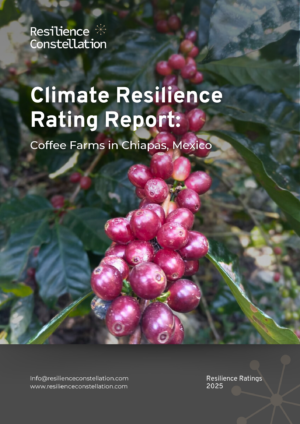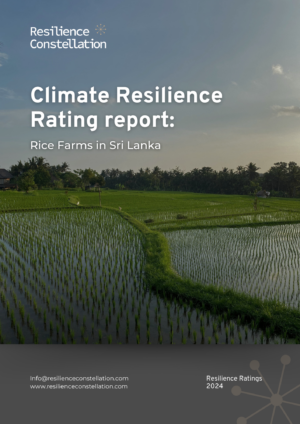Climate Resilience Ratings provide essential information needed to guide successful adaptation initiatives, providing a repeatable way of assessing the need and the outcomes of resilience programs
Resilience Ratings for Agriculture
Our Resilience Ratings for Agriculture deliver repeatable, systematic information on the resilience of rural businesses to climate related hazards
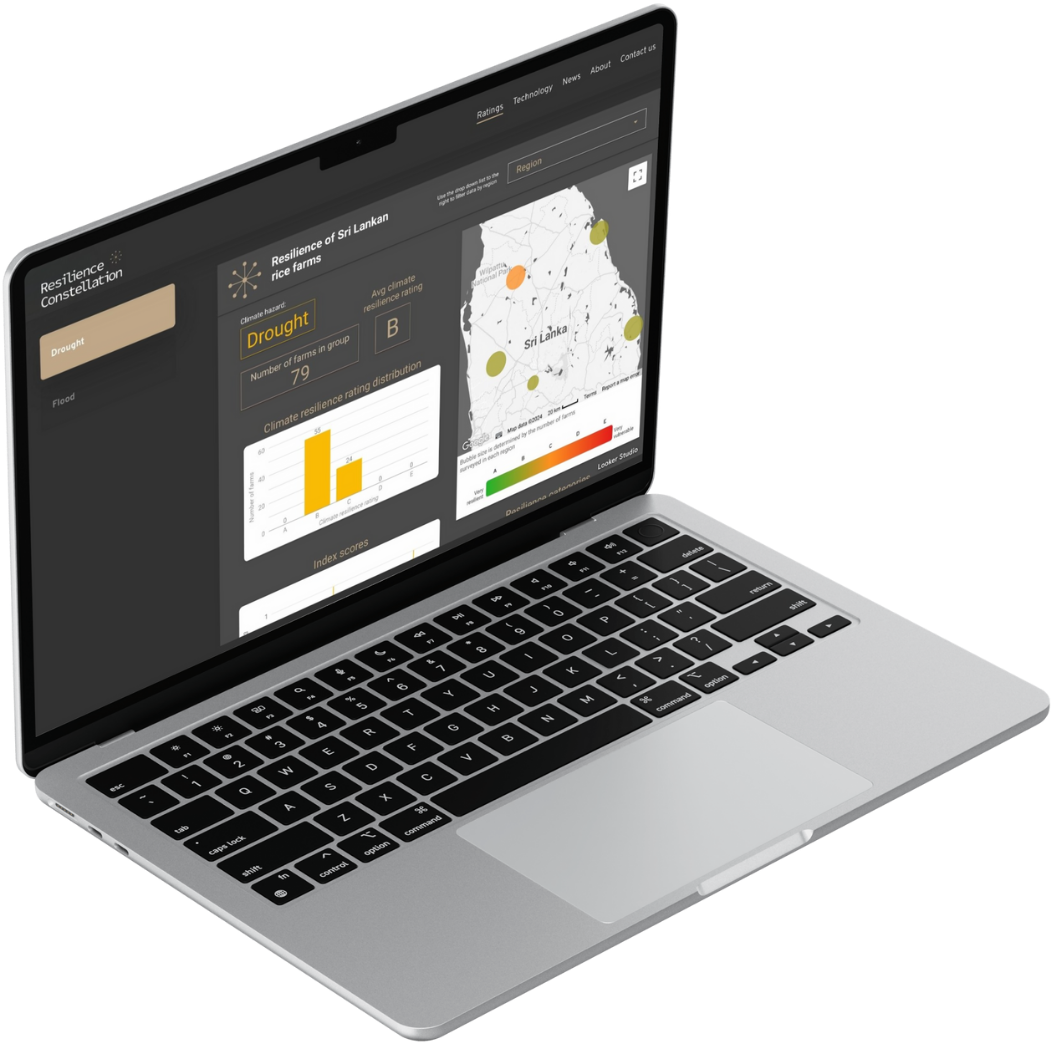

Navigating Climate Risks in Agriculture
Agricultural systems around the world are increasingly affected by climate related hazards, including:
- Extreme Heat
- Droughts
- Flooding
- Storms
These are sometimes felt as short-term events or longer periods of sub-optimal conditions. Farmers are often capable of adapting through a series of incremental changes but sometimes adaptation is insufficient and a transformation of the farming system is required.
Our ratings provide information on the need for adaptive or transformational finance.
Our ratings scores a farm’s exposure, sensitivity and adaptability to specified climate hazards.
Farms will be given a resilience rating from A to E as an indicator of the farms current level of resilience to the associated hazards.
A = Very Resilient
E = Very Vulnerable
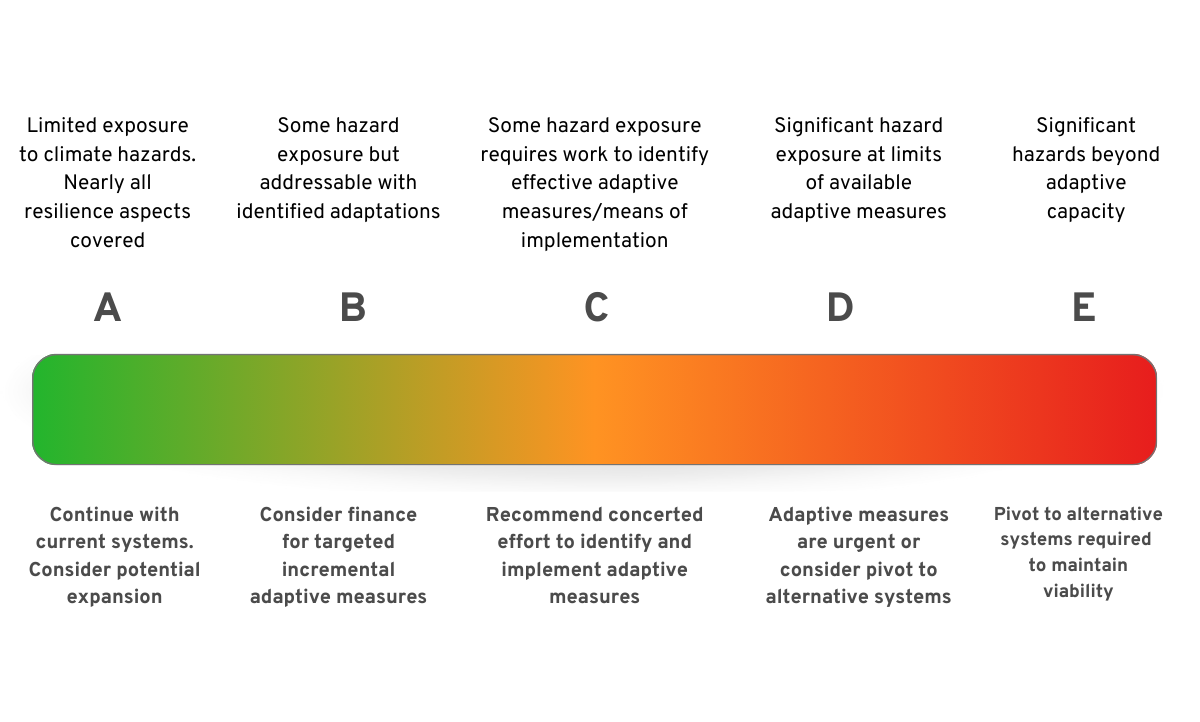
Our ratings scores a farm’s exposure, sensitivity and adaptability to specified climate hazards.
Farms will be given a resilience rating from A to E as an indicator of the farms current level of resilience to the associated hazards.
A = Very Resilient
E = Very Vulnerable

How are Ratings Delivered?
Our ratings are delivered for groups of farmers in specific locations / regions and crop or agricultural system types through a process involving the following steps.
Climate Resilience Rating Reports
Climate resilience ratings provide a snapshot of the resilience among farmers of a particular crop. Our climate resilience rating reports serve to explain these ratings and provide a breakdown of resilience scores against various categories.
Our ratings are relevant for the following types of organisations:
- Farmers Organsations
- Agricultural finance providers
- National & International DFI’s
- Government agencies
- Buyers/processors of Agricultural products
- NGO’s working on climate Adaptation
If you could benefit from a resilience ratings assessment tailored to the needs of your organisation, get in touch to discuss how we can support your resilience goals.

Why choose Resilience Constellation?
- Decades of experience in assessing the impacts of initiatives designed to protect and improve rural livelihoods and food systems
- Developed a systematic, science-based framework for assessing the resilience of farming systems to climate related hazards that can be readily configured and applied to different situations globally, in a repeatable manner
- Focused our efforts on this problem because we believe it is urgent and important
- Developed efficient and effective processes, combining data from different sources to objectively assess the situation
- A collaborative and open-minded approach to address the challenges of the sector.
What are the different stages involved in a Climate Resilience Ratings project?
Our ratings are delivered through a multi-step process as follows:
- Background Research into the situation and definition of the target groups.
- Configuration of a rating survey based on our templates – customisation or preliminary testing, as required.
- Data collection, which can include training and support of data collectors, if required.
- Data Analysis and triangulation with climate records and satellite information.
- Formation of a climate resilience rating report and feedback to farmers.
Contact us to discuss further details on how we can tailor our approach to the needs of your organisation.
What is a Climate Resilience Rating?
A measure of climate resilience. The resilience rating ranges from A (high resilience/ low vulnerability) to E (low resilience/ high vulnerability). The resilience rating is derived from a resilience index score, which is a function of scores for four separate component indices for exposure, sensitivity, adaptability and transformability
How does Resilience Constellation ensure the success of their projects?
At Resilience Constellation we work closely with our clients throughout the entire project lifecycle to ensure that their objectives are met. Our approach can be tailored to meeting the specific needs of each organisation.
How do our Climate Resilience Ratings benefit the farmers involved?
Our aim is to share the results of our surveys with the farmers who have contributed. To do this we are developing a platform that will enable farmers to:
- Benchmark their performance against other farmers in the same country or region;
- Gain access to ideas from other farmers in the area and individuals with relevant expertise on how to increase their resilience.
The nature of the information we are able to share with farmers will depend to some extent on the requirements of our customers.
What is the difference between climate change adaptation and climate resilience?
While often used interchangeably, in this context, adaptation and resilience have distinct meanings:
Climate change adaptation: Refers to the process of adjusting to immediate or expected impacts of climate change.
Climate resilience: The capacity of systems (social, economic and environmental) to cope with climate hazards. It goes beyond adaptation and includes the ability to anticipate, withstand, recover, and learn to adapt to a changing climate.
What are the key regulatory and voluntary reporting requirements to support climate change and resilience in agriculture?
Key regulatory and voluntary reporting requirements and standards include the Sustainable Finance Disclosure Regulation (SFDR) in the EU, the International Financial Reporting Standards (IFRS) S1, the Task Force on Climate-related Financial Disclosures (TCFD), and Global Reporting Initiative standards (GRI).
Our Climate Resilience Rating Reports can provide you the insights needed to effectively meet these reporting requirements.
